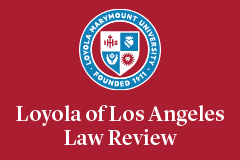Abstract
The ease of access to the Internet, coupled with the modern practice of sharing intimate digital photos between lovers, has given rise to a disturbing new trend known colloquially as “revenge porn”—that is, the nonconsensual posting of images that were originally given to another with the implied expectation of confidentiality. That act involves a deep personal betrayal and can inflict serious emotional damage on the person whose image has been shared, sometimes resulting in grave consequences to the victim. And once those images reach the Internet, they are often circulated widely; the victims retain no control over who may view or share them. This Article explores the types of laws that victims could use to seek justice, and it identifies relevant hurdles to relief. Several state tort laws, such as invasion of privacy, false light portrayal, defamation, and intentional infliction of emotional distress, could be used to combat revenge porn. Contract law may also provide a remedy through breach-of-implied-agreement claims or the collateral doctrine of promissory estoppel. Some states have recently gone so far as to enact criminal statutes penalizing the practice of revenge porn, focusing on the victim’s lack of consent. Of course, the mere existence of a criminal law does not guarantee its enforcement, and such laws do not offer victims the possibility of being awarded damages. Moreover, as of yet, there have been no successful prosecutions under these statutes, so we do not know how they will be construed or will fare in court. There are obstacles that a revenge porn victim must overcome. A defendant’s likely defense of consent could nullify such claims. In addition, the First Amendment Free Speech Clause will be said to impose an obstacle if a revenge porn victim seeks civil relief or if the government initiates a criminal prosecution. In fact, some would contend that no tort suit or prosecution could ever be successful. The argument would be that the First Amendment protects an individual against civil or criminal liability for publishing a lawfully obtained image honestly depicting the photographer’s subject, regardless of how unflattering the photograph may be or the effect that publication may have on the subject. This Article, however, explains why consent and First Amendment defenses should be unsuccessful. Ultimately, the Article maintains, the law must adapt to the “selfie” and “sexting” generation in order to provide meaningful relief to individuals whose well-intentioned—albeit ill-advised—attempts at flirtation achieve perpetual—and unwanted—fame and notoriety on the Internet. Intimate photographs are shared under circumstances giving rise to an implied agreement of confidentiality between the parties, and the Free Speech Clause does not shield a recipient against his broken promise not to share a photograph with others. Imposing tort and criminal liability on someone who breaches an agreement of confidentiality will not chill protected speech. It will only encourage people to keep their word.
Recommended Citation
Paul J. Larkin Jr.,
Revenge Porn, State Law, and Free Speech,
48 Loy. L.A. L. Rev. 57
(2014).
Available at: https://digitalcommons.lmu.edu/llr/vol48/iss1/2


